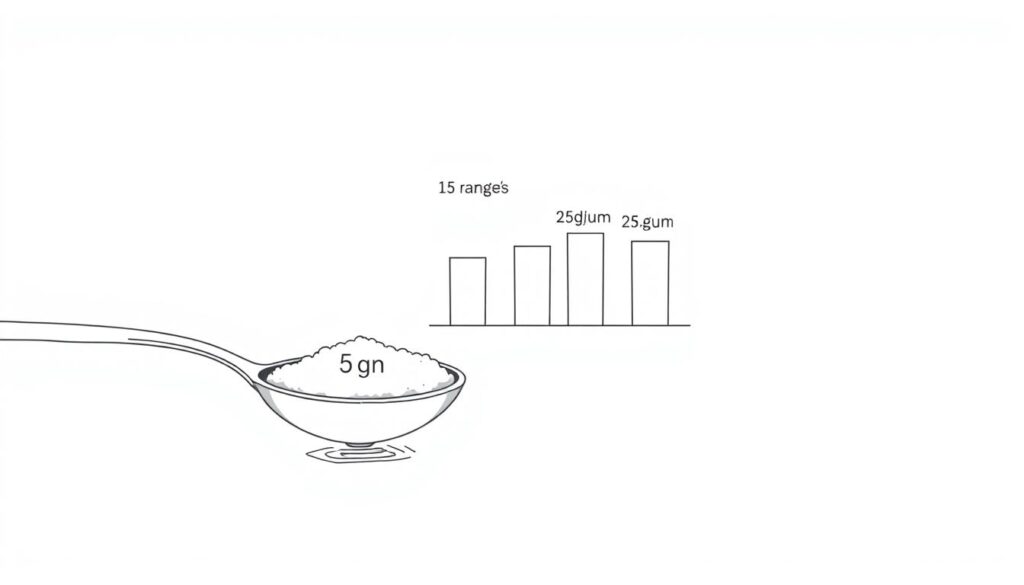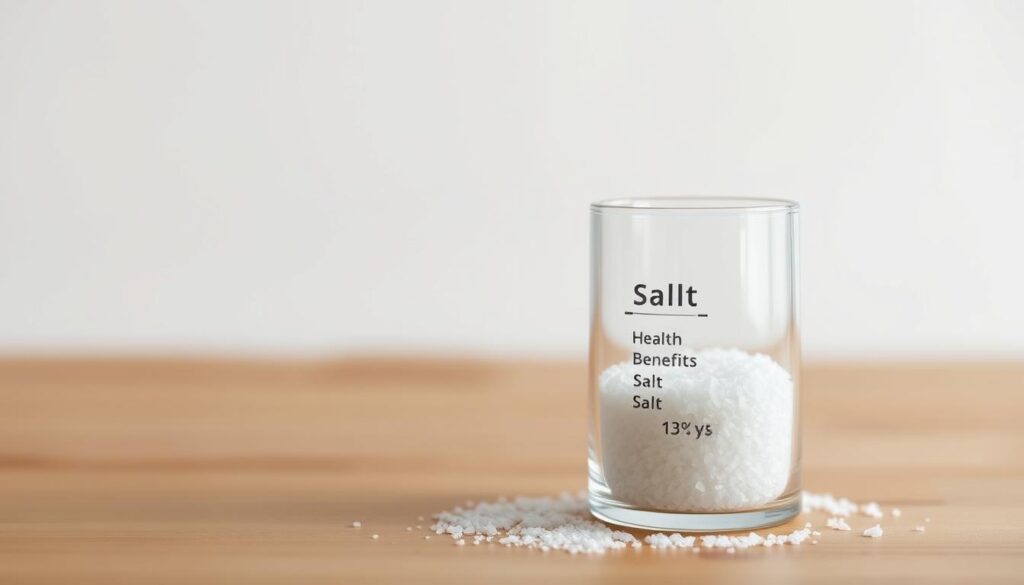Getting the right amount of salt is key to staying healthy. But is 5g of salta day too much? It’s important to know the daily salt limit and how it affects us. Health groups say we should eat less than 2,300 mg of sodium a day to avoid high blood pressure.
Adults should not have more than 6g of salt daily. This makes us wonder, what’s the best amount of salt we should eat?
Eating too much salt can lead to high blood pressure, heart attacks, and strokes. The American Heart Association suggests eating only 1,500 mg of sodium a day. Most of our salt comes from packaged foods, so we need to watch our intake. So, is 5g of salt a day okay, or is it too much?
It’s important to understand how salt affects our health. Our bodies need about 186 mg of sodium daily. But in the U.S., we consume around 3,400 mg of sodium. This shows we need to think about our salt intake and the risks of too much salt.
Key Takeaways
- The daily salt limit is recommended to be no more than 6g per day for adults.
- High salt intake is linked to increased risk of high blood pressure, heart attacks, and strokes.
- Approximately 75% of the salt consumed comes from packaged and everyday foods.
- The American Heart Association advises a lower intake of 1,500 mg per day.
- Understanding the relationship between salt intake and our health is vital to maintaining good health.
- Is 5g of salt a day too much, and what are the possible dangers of too much salt?
Understanding Salt and Sodium: The Basics
Salt is key to our diet, affecting our health in many ways. It’s mostly sodium, about 40%, and chloride, about 60%. Knowing the difference between salt and sodium helps us understand how much we should eat.
Sodium is vital for our body’s fluid balance and nerve function. But too much sodium can raise blood pressure, increasing heart disease risk. Adults should aim for no more than 2,300 milligrams of sodium daily, as the guidelines suggest. Some, like those with high blood pressure, might need to limit it to 1,500 milligrams, the American Heart Association recommends.
It’s important to know about different salts and their minerals. Types like table salt, sea salt, and Himalayan pink salt have unique mineral profiles. By knowing the health impacts of salt and following intake guidelines, we can stay healthy and avoid salt-related problems.

Here are some key points to consider when it comes to salt and sodium:
- The average American consumes about 3.4 grams of sodium daily, more than the recommended amount.
- Potassium-rich foods, like potatoes and bananas, can help relax blood vessels and aid in sodium removal, lowering blood pressure.
- Some chain restaurants must provide nutrition information, including sodium content, upon request.
Current Guidelines for Salt Consumption
The World Health Organization (WHO) says we should eat less than 2,000 mg of sodium daily. This is about 5 g of salt. They found that too much salt can cause high blood pressure and heart disease.
In the United States, the American Heart Association also suggests eating less than 2,300 mg of sodium. This is roughly 5.8 g of salt.
Adults worldwide eat about 4,310 mg of sodium each day, which is 10.78 g of salt. This is way over the recommended amount. It’s believed that too much sodium causes about 1.89 million deaths yearly.
To stay healthy, it’s important to follow sodium intake guidelines. Being mindful of salt in your diet is key.

Here are some important points about sodium intake guidelines:
* The WHO wants to see a 30% drop in salt intake by 2025.
* Cutting down on sodium can prevent many heart problems and deaths. It’s very cost-effective.
* Eating between 3 to 5 g of sodium daily is the safest for your heart.
By following these guidelines, you can lower your sodium intake. This can help improve your health.
Is 5g of Salt a Day Too Much?
The World Health Organization (WHO) says adults should eat less than 5g of salt daily. This is because too much salt can raise blood pressure and increase heart disease risk. In the U.S., people often eat over 8.5g of salt, more than the daily limit.
How much salt you can handle depends on your age and health. For instance, the American Heart Association advises those with high blood pressure or kidney disease to eat less than 1.5g of sodium. This is about 3.75g of salt.

Knowing the daily salt limit is key to staying healthy. By understanding how much salt you should eat, you can make better food choices. This helps keep your salt intake in check.
Here are some important salt intake tips:
- Adults should not have more than 6g of salt daily
- Children aged 7 to 10 should not have more than 5g of salt daily
- Children aged 4 to 6 should not have more than 3g of salt per day
Health Benefits of Moderate Salt Intake
Moderate salt intake is key for our body’s functions, like keeping fluids balanced and nerves working right. The World Health Organization says we should not have more than 2 grams of sodium daily. This is about 5 grams of salt.
This amount helps control blood pressure, keeps bones strong, and supports muscles. It also lowers the risk of heart disease and stroke.
Studies show that cutting down on salt can lower blood pressure a lot. This is true for everyone, no matter their sex or ethnicity. Eating foods high in potassium, like fruits and veggies, also helps prevent heart problems.
But, our age and where we come from can change how much salt we can handle. For example, people of African descent are more likely to get high blood pressure. As we get older, sodium can have even more negative effects. So, knowing how much salt we should eat is very important.

The table below shows how much salt we should eat and the benefits of doing so:
| Recommended Salt Intake | Potential Health Benefits |
|---|---|
| Less than 5 grams per day | Reduced risk of cardiovascular disease and stroke |
| 5-6 grams per day | Regulation of blood pressure, support of healthy bones and muscle function |
| More than 6 grams per day | Increased risk of salt-related health risks, including cardiovascular disease and stroke |
Risks of Excessive Salt Consumption
Too much salt can harm your health in many ways. It can lead to high blood pressure, heart problems, and affect your kidneys. It’s important to watch how much salt you eat to avoid heart attacks and strokes.
In many places, people eat more salt than they should. This is a big worry. Knowing the dangers of too much salt helps us stay healthy.
- Eat fewer processed foods, which are salty
- Look for products with less sodium
- Use fresh ingredients and herbs instead of salt in cooking
Being careful with salt and choosing better foods can help you stay healthy. It’s all about making smart choices for your body.
Hidden Sources of Salt in Your Diet
Many people don’t know how much salt is in everyday foods. This can greatly affect their salt intake and health. The daily salt limit set by health groups is often not followed because of salt in processed and restaurant foods.
Processed meats, canned goods, and frozen meals are big hidden sources of salt. Even foods that seem healthy, like bread and breakfast cereals, can have a lot of salt. It’s key to know these sources and read nutrition labels effectively to choose wisely about salt intake.
To lessen the health effects of salt, we must watch what we eat. Choosing low-sodium options is important. Simple diet changes can greatly cut down our salt intake and boost our health.
- Processed meats like bacon and sausages
- Canned goods like soups and vegetables
- Frozen meals and pizzas
- Bread and baked goods
Knowing about these hidden sources of salt helps us control our salt intake. This way, we can lower the risk of bad health effects of salt.
Signs You’re Consuming Too Much Salt
Too much salt can harm your health. It’s important to know the signs and cut down on salt. High blood pressure, swelling, and bloating are signs you’re eating too much salt. Also, excessive thirst, headaches, and feeling tired can mean you’re getting too much salt.
The World Health Organization says eating more than 5g of salt a day can raise blood pressure. This can damage your arteries and organs over time. High sodium levels in your blood can also increase blood volume, affecting blood pressure. Knowing the signs of too much salt and cutting down is key.
To avoid salt-related health issues, watch your salt intake. Be aware of hidden salt sources in your diet. Recognizing signs of too much salt and reducing it can help prevent health problems.
Some common signs of too much salt include:
- High blood pressure
- Swelling and bloating
- Excessive thirst
- Headaches and fatigue
Being mindful of salt and reducing it can help you stay healthy. It’s all about maintaining a balanced lifestyle.
Practical Tips for Managing Salt Intake
It’s important to control salt intake to avoid health issues like high blood pressure and heart disease. To meet the daily salt limit, try using herbs and spices for flavor instead of salt. Cooking meals from scratch and eating smaller portions can also help lower salt intake.
Regular exercise and managing stress can help keep blood pressure in check. It’s also key to watch the salt in processed and packaged foods. By choosing wisely and following these tips, you can manage salt intake and lower health risks.
| Food | Salt Content per 100g |
|---|---|
| Bread | 1.5g |
| Breakfast Cereal | 0.5g |
| Ready Meal | 2.5g |
Being mindful of salt intake and making smart choices can help you stay healthy. It’s all about making the right choices for a balanced diet.
Conclusion: Finding Your Salt Balance
Finding a healthy balance with salt is key. Too much salt can harm your health, leading to high blood pressure and heart problems. But, a little salt is needed for our bodies to work right. Knowing the daily salt limit and managing salt intake helps keep us healthy.
Guidelines from the World Health Organization and American Heart Association are a good start. But, remember, your body’s needs can change. Things like how active you are, how much you sweat, and how your body reacts to salt can affect what’s right for you. By watching what salt you eat, trying salt-free options, and making healthy choices, you can find the right amount of salt for you.





